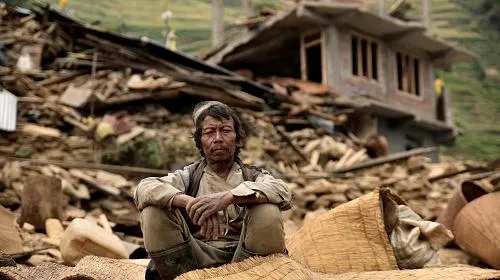KATHMANDU- (April 25, 2016)- One year after the 7.8 magnitude earthquake struck Nepal on April 25, reconstruction efforts need to be accelerated, urges international humanitarian organization CARE. The majority of people who lost their homes still live in temporary shelters and many have not regained their livelihoods.
“The earthquake was a natural disaster of a massive scale and people will depend on our support for years to come. Tens of thousands of people still do not have proper shelter, access to safe drinking water or proper sanitation. The rebuilding of schools, health facilities and other vital infrastructure needs to move quicker. Those who lost their agricultural land and livestock need support so they can start earning an income again,” said CARE Nepal’s Country Director, Lora Wuennenberg.
CARE is particularly concerned about the challenges facing women and girls, who were disproportionately affected by the earthquake. “Landless women and girls are the most vulnerable in this situation and we need to ensure that they are included in the reconstruction efforts. One of CARE’s top priorities is to help them learn new skills so they can earn an income and feed their families,” said Wuennenberg.
CARE staff has worked hand in hand with local communities, government agencies and civil society partners in supporting the relief and recovery. At the same time, CARE ensures that local communities have a voice in their recovery. “It works like this: vulnerable communities define their own needs and actively contribute to their own recovery. CARE then provides technical and material support, for example in helping rebuild water systems, latrines, and other community infrastructure,” explains Wuennenberg.
Adds Patrick Ndungu, CARE Nepal’s Emergency Program Team Leader: “In the coming years, we will help communities build safer homes. Along with construction of semi-permanent health facilities, CARE will work on ensuring that the most vulnerable communities have access to safe drinking water by restoring damaged water systems and by helping the community construct new ones.”
The day after the earthquake flattened many Nepalese cities and villages, CARE distributed tarpaulins for temporary shelter, hygiene materials such as sanitary pads, water purifiers and soaps as well as dry food items such as noodles and beaten rice. Over the following months, CARE reached communities in four of the worst affected districts: Gorkha, Dhading, Sindhupalchowk and Lamjung. With support from multiple donors and in coordination with the government of Nepal, CARE has been able to reach a total of 196,125 people with emergency shelter, including warm clothes and blankets during winter season, seed support, household latrines, and dignity kits through its implementing partners.
CARE has supported pregnant and lactating mothers by setting up temporary birthing centers and provided equipment such as delivery beds and new born resuscitation sets to health facilities. In order to support women affected by gender based violence, CARE has set up female friendly safe spaces providing counseling and other support services.
To date, CARE has raised $26.3 million US dollar, lacking 13.7 million to reach the funding target. “Experience from CARE’s humanitarian work around the world shows us that the recovery and reconstruction of communities after such a disaster will take time. We now have to help people, especially women and girls, get back on their feet again, earn an income and have a safe home. For this, we need more funds and support,” says Wuennenberg.
– End –
Media contact: Holly Frew hfrew@care.org +1.404.979.9389
About CARE: Founded in 1945, CARE is a leading humanitarian organization fighting global poverty. CARE has more than six decades of experience helping people prepare for disasters, providing lifesaving assistance when a crisis hits, and helping communities recover after the emergency has passed. CARE places special focus on women and children, who are often disproportionately affected by disasters. To learn more, visit www.care.org.

